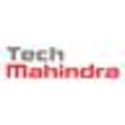-
About
- About Listly
- Community & Support
- Howto
- Chrome Extension
- Bookmarklet
- WordPress Plugin
- Listly Premium
- Privacy
- Terms
- DMCA Copyright
- © 2010-2025 Boomy Labs


 Tech Mahindra
Tech Mahindra
Listly by Tech Mahindra
Here is a list of Top performing blogs in 2014 at the Tech Mahindra Website

In today's world, the network of telecommunication is distributed from the communication provider's premises to customer premises in the form of physical proprietary hardware equipment. The time to market for new service is high due to logistics (such as space and energy) arrangement, dependency on commissioning, deploying and configuring new equipment.

Types of Access Control Mechanisms Many of us have come across the terms like MAC, DAC, RBAC, ACLs while reading various e-security related articles. However not all of us (except the CISSPs) know the meanings of these terms and the differences between these Access Control mechanisms. Before proceeding to Access Control mechanisms, let's see what Access Control is.

Recently, while thumbing through a back issue of Harvard Business Review from Jan 2011, I came across an article that made me stop and take a deep breath. "Yesssss! This is exactly the kind of thing we need- the kind of thing the newly emerging 'Common Man Party' and such like must focus on!"

In this hyper connected world, enterprises realize that the traditional business processes fail to meet the needs of digital natives and also fail to leverage the power of Internet of Things (IOT). Enterprises operating in high Process and Services verticals like Telecommunications, Retail Banking, Property & Causality Insurance etc., need to invest on digitizing their business processes.

Working in Data Services day in and day out, and talking to many customers and stakeholders about their 'ambitions' has struck me with a new metaphor that we can liken Data to. Its simple - The lifecycle of Data seems a lot like that of human beings! Let me elaborate.
